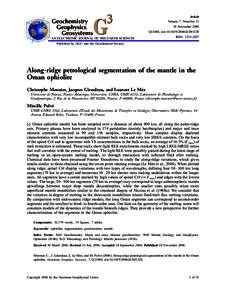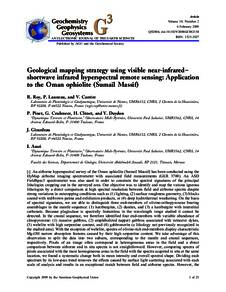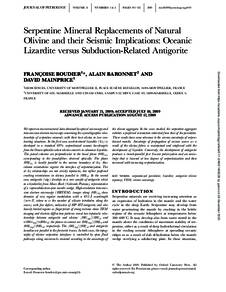Document
Rock-matrix porosity and permeability of the hydrothermally altered, upper oceanic crust, Oman ophiolite.
Contributors
Publisher
Journal of Geophysical Research: Solid Earth.
Gregorian
2023-01
Language
English
English abstract
Porosity and permeability are key controls on hydrothermal circulation and alteration in
magmatically heated upper oceanic crust. However, the hydraulic properties of basalts altered above 200°C
are largely unknown, leaving their role in high-temperature systems unclear. Here, we assess rock-matrix
porosities and permeabilities of pervasively altered MORB-like basalts from outcrops in the sheeted
dikes and axial lavas of the Semail ophiolite, Oman. The samples represent regional spilite alteration
(chlorite–albite–quartz ± actinolite; 150–440°C) and localized epidosite alteration (epidote–quartz;
255–435°C). Porosity and permeability of spilitized rocks vary as follows: interpillow hyaloclastites (14–27
vol.%, 10−17–10−15 m2
) > pillow cores (4–12 vol.%; ∼10−19–6 × 10−18 m2
) > pillow rims (4–11 vol.%;
∼10−19–2 × 10−18 m2
) > massive sheet flows (1–9 vol.%; ∼10−19 m2
) ≥ dikes (1–5 vol.%; ∼10−19 m2
). Pillow
values fall within the ranges of existing data on fresh and low-temperature altered basalts in in situ crust.
However, hyaloclastite permeabilities are 1–4 orders of magnitude higher and are clearly preferred flow
paths. Epidosites have elevated porosity and permeability irrespective of rock morphology (18–26 vol.%;
∼10−16–10−14 m2
). Pillow stacks have upscaled (∼104
m3
) matrix porosities and permeabilities of ∼9 vol.% and
∼10−17–10−16 m2
when spilitized and 16 vol.% and up to ∼10−14 m2
when epidotized. Upscaled permeabilities
of spilites meet minimum requirements for observed heat and fluid discharge from high-temperature seafloor
systems even without fracture networks, and reflect strong flow through the rock-matrix
Member of
Same Subject





